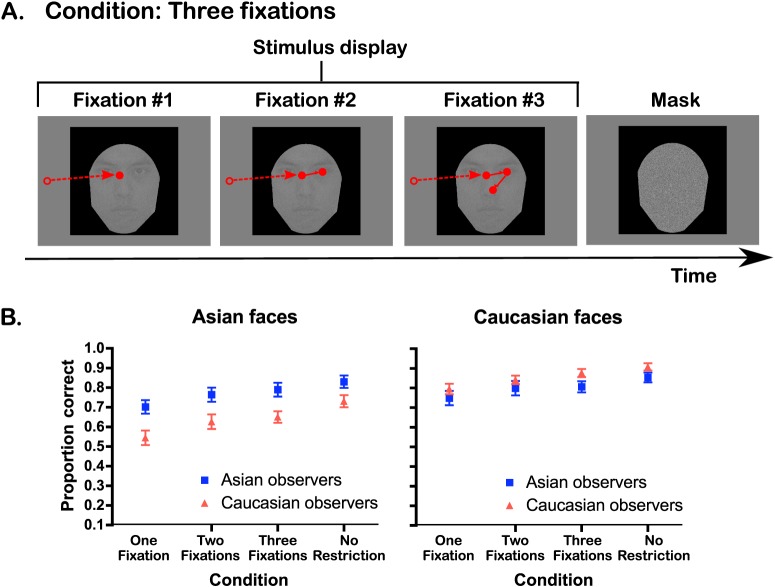Figure 7.
Experiment 4: Free-eye-movement task with a restricted number of fixations. (A) This example shows a typical trial when three fixations are allowed. One fixation, two fixations, or an unrestricted viewing of 5000 ms were allowed in other trials. Here the observer first fixated on the side of the screen and then made three fixations on the face. A mask replaced the face once the observer's eyes moved away from the third fixation. Red dots and arrows denote the saccades and were not visible in actual experiments. (B) The results showed that identification accuracy after the first fixation achieved on average 83.4% of its peak accuracy with 5000-ms presentation, indicating that the first fixation contributed markedly to face identification.

